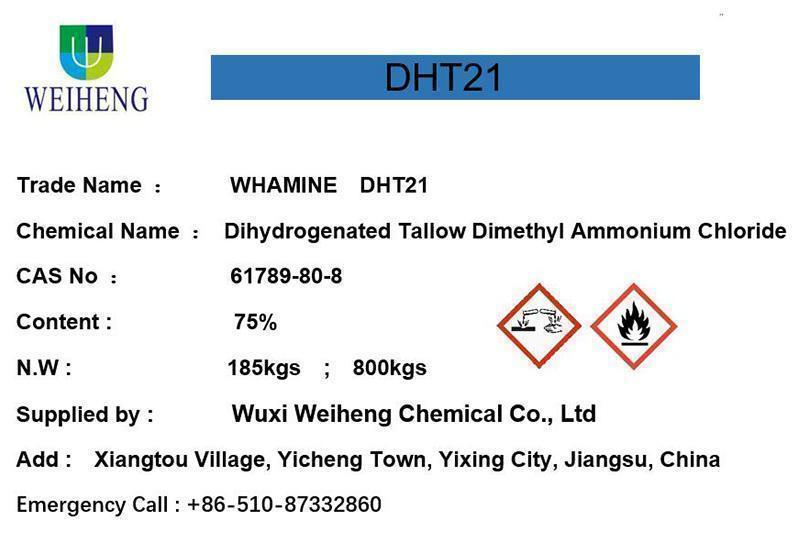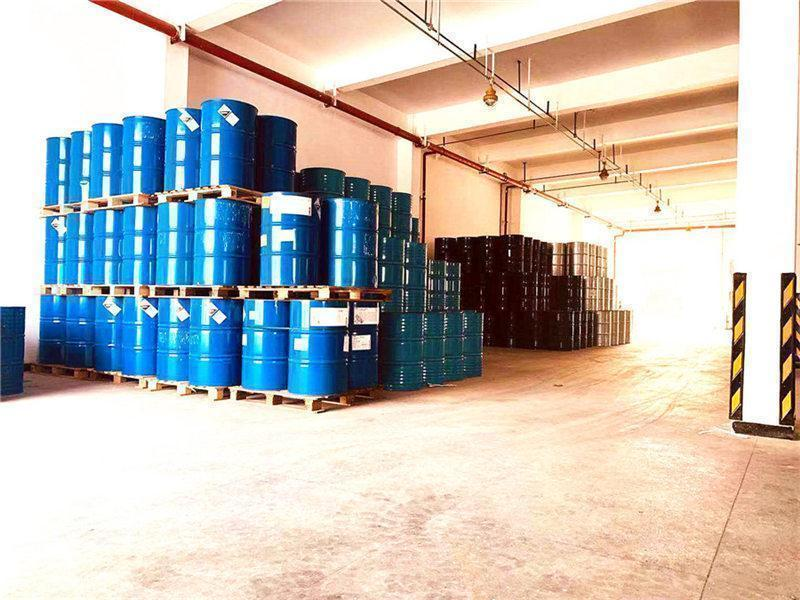Dihydrogenated tallow dimethyl ammonium chloride is a compound that belongs to the class of double alkyl quaternary ammonium salts. Here are some properties and characteristics of this substance:

Dihydrogenated tallow dimethyl ammonium chloride is almost insoluble in water. This means that it has limited ability to dissolve in water and tends to form separate phases or suspensions when mixed with water. However, it is soluble in non-polar solvents such as oils, fats, and organic solvents.
At room temperature, dihydrogenated tallow dimethyl ammonium chloride exists as a colorless or light yellow liquid or paste. The exact physical state may depend on the specific formulation or concentration of the compound.
This compound exhibits good chemical stability, which means it is resistant to decomposition or degradation under normal conditions. It can withstand exposure to various environmental factors such as temperature, pH changes, and light without significant chemical breakdown.
Dihydrogenated tallow dimethyl ammonium chloride is known for its surfactant properties. It can reduce the surface tension of liquids, allowing them to spread more easily, and can also act as an emulsifying agent, aiding in the formation and stabilization of emulsions.
Quaternary ammonium compounds, including dihydrogenated tallow dimethyl ammonium chloride, possess antimicrobial properties. They are effective against a wide range of microorganisms, including bacteria, viruses, fungi, and algae. These biocidal properties make them useful in various applications, such as disinfectants, sanitizers, and preservatives.

QACs are effective against both Gram-positive and Gram-negative bacteria. They disrupt the cell membrane of bacteria, leading to leakage of cellular contents and ultimately causing cell death. Common bacteria that can be targeted include Escherichia coli, Staphylococcus aureus, Salmonella spp., and Pseudomonas spp.
QACs have demonstrated efficacy against enveloped viruses, which have a lipid envelope surrounding their genetic material. By disrupting the viral envelope, QACs can inactivate the virus. This makes them useful in antiviral products targeting enveloped viruses such as influenza, herpes simplex virus, and coronaviruses.
QACs are also effective against certain types of fungi, including yeast and mold. They disrupt the fungal cell membrane, leading to cellular damage and inhibition of growth. QACs are commonly used in antifungal formulations for applications such as mold control, fungal disinfection, and preservation of products.
QACs can inhibit the growth of algae, including both microscopic and macroscopic species. They disrupt the cellular structure of algae, leading to inhibition of photosynthesis and growth. QACs are used in algaecides for various applications, such as controlling algae in water systems, swimming pools, and aquaculture.
It's important to note that while QACs are effective antimicrobial agents, the efficacy can vary depending on factors such as concentration, contact time, and the specific microorganism targeted. Additionally, the development of microbial resistance to QACs is a concern, and proper usage guidelines should be followed to minimize the risk of resistance.
As with any antimicrobial product, it is important to use dihydrogenated tallow dimethyl ammonium chloride and other QACs in accordance with product labeling and safety guidelines to ensure effective and safe use.